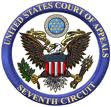Incarceration Nation
 Despite the increasingly audible calls for changes in policy, we should not lose sight of the extent and nature of imprisonment in the United States. As of 1975, only .01% of the population was imprisoned, but the percentage has grown every year since then and now stands at almost .05%. We as a nation have the dubious distinction of reporting the highest per capita imprisonment figure in the world. What’s more, American prisons are no longer geared to rehabilitating inmates. Instead of educating and training inmates, prisons for the most part simply warehouse them.
Despite the increasingly audible calls for changes in policy, we should not lose sight of the extent and nature of imprisonment in the United States. As of 1975, only .01% of the population was imprisoned, but the percentage has grown every year since then and now stands at almost .05%. We as a nation have the dubious distinction of reporting the highest per capita imprisonment figure in the world. What’s more, American prisons are no longer geared to rehabilitating inmates. Instead of educating and training inmates, prisons for the most part simply warehouse them.
These developments do not derive from increases in crime or from the widespread commission of more serious crimes. Instead, the increase in the number of inmates and the use of warehouse-style incarceration are attributable to such policies as quicker revocation of probation and parole, mandatory sentences for certain crimes, three strikes legislation, and truth-in- sentencing laws. Often, these policies come into play for drug-related offenses and are part of the larger “war on drugs.”
Noam Chomsky contends, “In the United States the drug war is basically a technique for containing populations internal to the country and doesn’t have much to do with drugs.” Chomsky has in mind the urban underclass, which is disproportionately but not exclusively made up of members of minority groups. Middle and upper class Americans have come to see the underclass as dangerous and almost inherently criminal and are comfortable with warehousing larger and larger numbers in order to maintain social control. Chomsky suggests the contemporary imprisoning of large numbers of poor men and women is an American variety of “social cleansing.”
As harsh as Chomsky’s comments might seem, law professor Jonathan Simon might take the critique one step further. In his book Poor Discipline, Simon argues that mainstream Americans perceive inmates as a type of “toxic waste” and take those who run our jails, prisons, and penitentiaries to have the nasty task of “waste management.” How troubling is to see our nation traveling down this fundamentally dehumanizing path.

 It’s almost like Judge Easterbrook read my article. I have a
It’s almost like Judge Easterbrook read my article. I have a  Police found marijuana hidden in a car that Maurice Crowder and a colleague tried to ship from Arizona to Illinois. Crowder was then charged with, convicted of, and sentenced for two crimes: attempted possession with intent to distribute and conspiracy, both in violation of 21 U.S.C. § 846. Sounds like double-dipping, right? After all, both crimes of conviction arose from the same underlying criminal plot. Crowder appealed to the Seventh Circuit on this basis, arguing that he could not be punished for both crimes.
Police found marijuana hidden in a car that Maurice Crowder and a colleague tried to ship from Arizona to Illinois. Crowder was then charged with, convicted of, and sentenced for two crimes: attempted possession with intent to distribute and conspiracy, both in violation of 21 U.S.C. § 846. Sounds like double-dipping, right? After all, both crimes of conviction arose from the same underlying criminal plot. Crowder appealed to the Seventh Circuit on this basis, arguing that he could not be punished for both crimes.